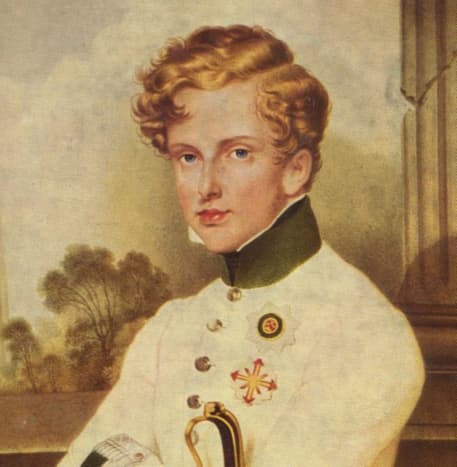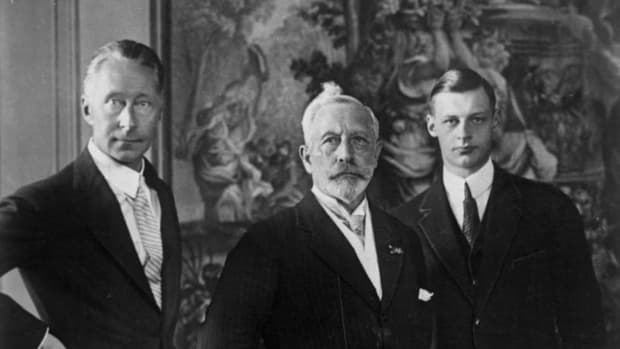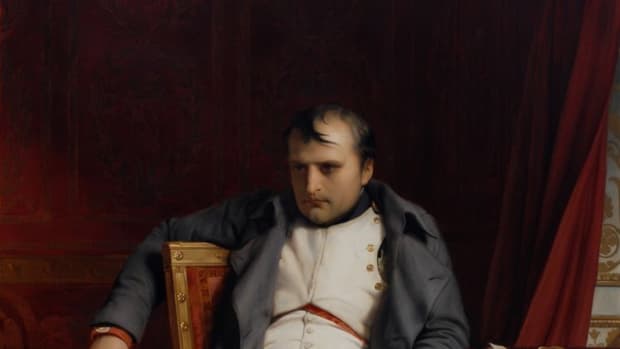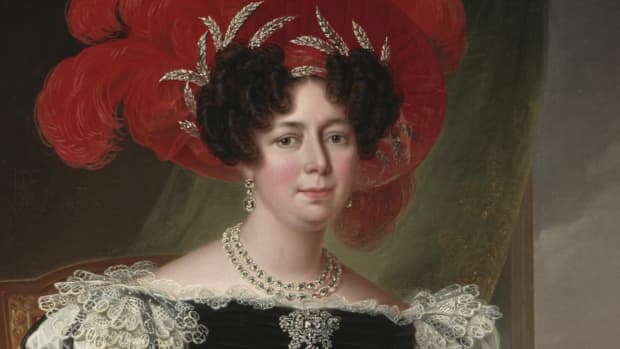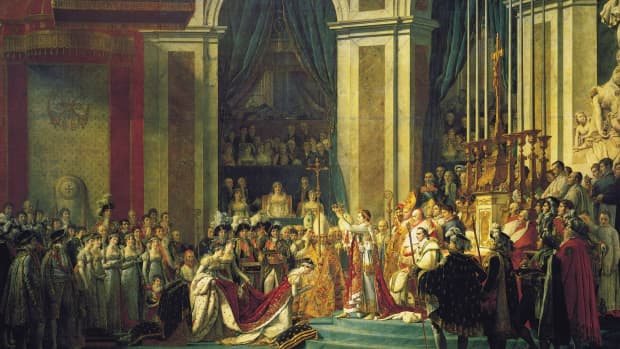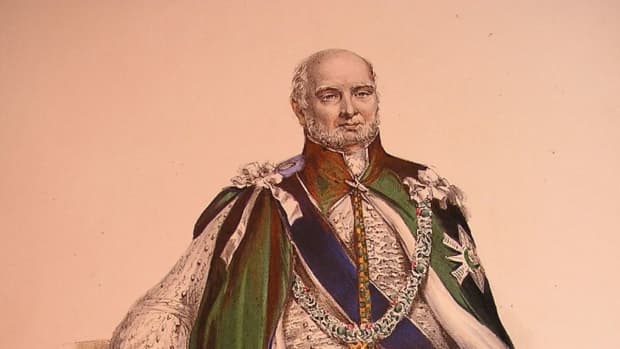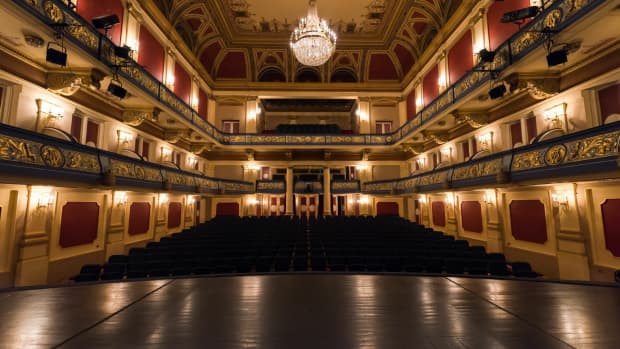Napoleon Bonaparte's Son Napoleon II, Duke of Reichstadt
Emperor Napoleon Bonaparte's Son, Napoleon Bonaparte
Napoleon François Charles Joseph Bonaparte was born on the morning of the 20th March 1811 at the Tuileries Palace in Paris. The city's residents were notified by the firing of one hundred cannons that Emperor Napoleon Bonaparte was finally a father and that his issue was male.
The newborn's mother, Napoleon's second wife, was Marie-Louise of Austria, the daughter of Holy Roman Emperor Franz II, Franz I of Austria. She fulfilled Napoleon's wishes for an heir; his first wife, Joséphine de Beauharnais, had disappointed him in that regard, so he divorced her in 1809. He called Joséphine his true love (though he had a number of other relationships throughout his life), and reputedly, his last word was "Josephine."
Baby Napoleon was invested with the titles of Prince Imperial and King of Rome. He was christened on the 9th of June 1811 at the Notre-Dame Cathedral, Paris, and a week of celebrations followed.
His governess between 1811 and 1814 was the affectionate and sensible Louise Charlotte Françoise de Montesquiou, "Maman Quiou."
Emperor Napoleon left his wife and son and marched off to fight for dominance over his enemies on the 24th of January, 1814. This was the last time that the ruler saw them.
Emperor Napoleon II's Disputed Reigns
Paris fell to Napoleon's enemies, and his military commanders mutinied, so on 4th April 1814 Napoleon Bonaparte was forced to abdicate in his son's favour and accept exile on the island of Elba. For two days, his three-year-old son served as his replacement, on paper at least, before Napoleon reworded the abdication to include his heirs.
Marie-Louise and the young Napoleon relocated to the Austrian court of her childhood instead of travelling to Elba. Mother and son lived at the Schonnbrun Palace in Vienna, and from this time, he was known as Franz, the German version of his second Christian name. The French awarded him the title of Duc de Parme or Duke of Parma.
In February 1815, Emperor Napoleon escaped from Elba, and he reclaimed power in France as he ousted King Louis XVIII. After his defeat at the Battle of Waterloo on 18th June 1815, Napoleon abdicated for a second time, and he was banished to St. Helena where he suffered poor health and died on 5th May 1821.
The emperor had stepped aside so that his son could succeed him, although he knew that a deposed monarch waited in the shadows. The disputed reign of four-year-old Napoleon II occurred between 22nd June 1815 and 7th July 1815. The government did not recognise him as ruler, and the monarchy under King Louis XVIII was formally restored. Napoleon II remained in Austria.
Napoleon II: Like Father, Like Son?
From an early age, Napoleon II suffered from difficulties breathing, but when he was twelve years old, this was not deemed an impediment to a military career, so he embarked on his training as a cadet. He was noted for his intelligence and dedication.
There was a problem. Most European leaders were reluctant to allow Napoleon's son to pursue a military career because they feared that, like his father, he would wreak havoc and deliver bloodshed if he returned to France. The Bonapartists still regarded him as their absent ruler.

Holy Roman Emperor Franz II, Emperor Franz I of Austria was Napoleon II's maternal grandfather.
Wikipedia Public Domain
His grandfather Holy Roman Emperor Franz Ii, Franz I of Austria, shared their opinion. In 1818 he gave Franz/Napoleon the Austrian title of Duke of Reichstadt, but he prevented him from taking a political role, and he refused him meaningful positions in the Austrian Army despite promoting him through the ranks. He was placed in command of a battalion, but the role shielded him from consequential campaigns.
Tuberculosis, Burial and Adolf Hitler
The problems with his lungs that he'd endured since childhood developed into tuberculosis. On the 22nd July 1832, aged twenty-one Napoleon II, Duke of Reichstadt, passed away at the Schonbrunn Palace, Vienna.
He was laid to rest in the House of Habsburg tradition. His heart was placed in the family's Heart Vault (herzgruft) in the Augustinian church a short distance from the Hofburg Palace in Vienna. His entrails were interred in the Ducal Crypt in St. Stephen's Church in the city, and the rest of Napoleon II, Duke of Reichstadt was buried in the Imperial Crypt (kaisergruft) in the Viennese Capuchin church.
His story was not over. In 1940 Adolf Hitler ordered that Napoleon II's body should be relocated to Paris. His remains from the Imperial Crypt were transported to the French capital, but oddly, his heart and entrails remained in Austria. Hitler's insistence was apparently a signal of honour to Napoleon Bonaparte, who had been moved from his St. Helena grave to Paris in 1840.
The two Napoleon Bonapartes lay side by side at Les Invalides, Paris, for twenty-nine years until the son was moved to the lower church at Les Invalides.
Despite disputes about whether Napoleon II's two rules truly occurred, when Napoleon III rose to power in France, he elected to call himself "the third" as a mark of respect to his ancestor.


Sources
- NAPOLEON II - napoleon.org
- Napoléon-François-Charles-Joseph Bonaparte, duke von Reichstadt | Austrian-Italian noble | Britannic
- Napoléon François Charles Joseph Bonaparte, Napoléon II | Unofficial Royalty
This content is accurate and true to the best of the author’s knowledge and is not meant to substitute for formal and individualized advice from a qualified professional.
© 2023 Joanne Hayle





